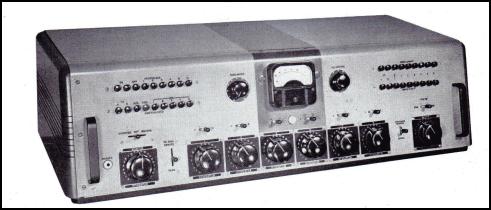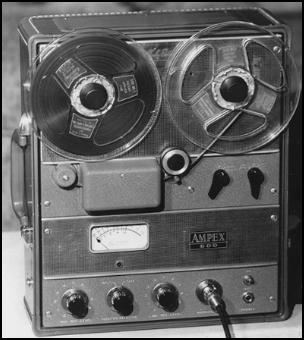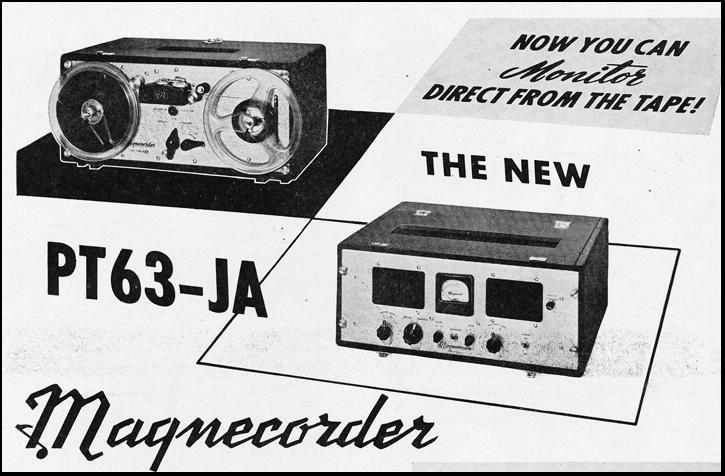Between 1959 and 1971, and in 1984, I worked in radio. Among the jobs I did was reporter, music director, traffic manager, copywriter, and program director. But most of the time I was a common announcer and board operator.

Electrovoice microphone
Near the end of this career, I passed the Federal Communications Commission examination for a first-class radiotelephone operator permit, which entitled me to do many things I did not actually know how to do. In practice, having the permit allowed me to keep transmitter logs at stations with directional antenna arrays.

Gates board, common in control rooms in the 1960s.
Radio was the sole electronic medium from its beginnings in the early twentieth century until the 1940s. The networks offered news, talk, variety, concerts, and drama – soap operas in the daytime and westerns, detective stories, and science fiction among other things at night and on weekend afternoons.
As television spread in the late 1940s and early 1950s, radio fell back on music and news. Nonetheless, the number of radio stations grew rapidly.
In 1945, there were 931 AM stations in the United States, 46 FM stations, and just six commercial television stations.

older RCA board with pushbuttons
By 1950, there were 2,118 AM stations, 593 FM stations, and 47 commercial television stations.
In 1970, there were 4,269 AM stations, 2,083 commercial FM stations, 508 commercial VHF television stations, and 183 commercial UHF television stations. (As of June 30, 2013, there were 4,734 AM stations, 6,606 commercial FM stations, 1,028 commercial VHF television stations, and 358 commercial UHF television stations.)

Ampex portable tape recorder – most control rooms had two or three, mainly to play commercials.
Most radio stations were local small businesses. The FCC had decided in 1953 that no one could own more than seven AM stations, seven FM stations, and seven television stations. (A new rule promulgated in 1985 allowed ownership of twelve stations in each category, and the Telecommunications Act of 1996 did away with the limit entirely. Thus one company, Clear Channel Communications, owned more than 1250 radio stations nationwide in 2003, about one of every nine stations in the country. And the number of owners dropped from about 5,100 in 1996 to only 3,800 only six years later in 2002.)

Gates turntable
I worked at nineteen radio stations in one capacity or another, as listed below. Dates are approximate.
| • | News director, KCYX, McMinnville, Oregon, 1984. |
| • | Board operator and announcer, KKEY, Vancouver, Washington, 1970-1971, part-time (automated easy listening). |
| • | Announcer, board operator, music director, reporter, KPOJ, Portland, Oregon, 1969-1970 (middle of the road). |

RCA microphone
| • | Announcer and board operator, KJIB-FM, Portland, Oregon, 1968-1969 (easy listening; chose music for classical program which respected local actor Mark Allen announced). |
| • | Announcer and board operator, KBOO-FM, Portland, Oregon, 1968-1972, volunteer (eclectic). |
| • | Announcer and board operator, KIBE-AM and KDFC-FM, San Francisco, California., 1967-1968 (classical). |
| • | Announcer and board operator, WTSA, Brattleboro, Vt., 1967 (middle of the road). |
| • | Board operator and announcer, W?-FM, New York, 1967, part-time (foreign language and horse-race results). |
| • | Announcer and board operator, WBAI-FM, New York, 1967, part-time and volunteer (eclectic, listener-supported). |
| • | Announcer and board operator, KEST-FM, Boise, Idaho, 1966 (automated easy listening). |
| • | Announcer and board operator, WSLB, Ogdensburg, New York, 1966 (top forty). |
| • | Announcer, board operator, copywriter, KRNR, Roseburg, Oregon, 1965-1966 (top forty, country). |
| • | Announcer, board operator, copywriter, KQEN, Roseburg, Oregon, 1964-1965 (middle of the road). |

Magnecorder tape recorder like the ones in the KLOO control room.
| • | Announcer, board operator, traffic manager, copywriter, KLOO, Corvallis, Oregon, 1963-1964 (middle of the road). |
| • | Program director, music director, announcer, and board operator, KLAD, Klamath Falls, Oregon, 1962-1963 (top forty). |
| • | Announcer and board operator, KAYT, Rupert, Idaho, 1961-1962 (middle of the road). |
| • | Announcer and board operator, KATN, Boise, Idaho, 1960-61, part-time (country and western). |
| • | Announcer and board operator, KGEM, Boise, Idaho, 1960, part-time (top forty). |
| • | Announcer and board operator, KFXD, Nampa, Idaho, 1959, part-time (middle of the road). |